
Luna, officially the Municipality of Luna,, is a 2nd class municipality in the province of Apayao, Philippines. According to the 2015 census, it has a population of 19,063 people.

Bucloc, officially the Municipality of Bucloc, is a 6th class municipality in the province of Abra, Philippines. According to the 2015 census, it has a population of 2,501 people.
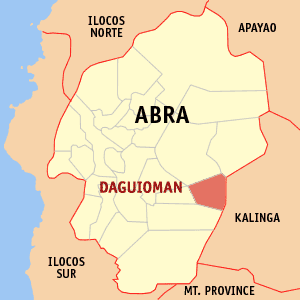
Daguioman, officially the Municipality of Daguioman, is a 5th class municipality in the province of Abra, Philippines. According to the 2015 census, it had a population of 2,088 people.

Lagangilang, officially the Municipality of Lagangilang, is a 5th class municipality in the province of Abra, Philippines. According to the 2015 census, it has a population of 14,255 people.

Lagayan, officially the Municipality of Lagayan, is a 5th class municipality in the province of Abra, Philippines. According to the 2015 census, it has a population of 4,499 people.
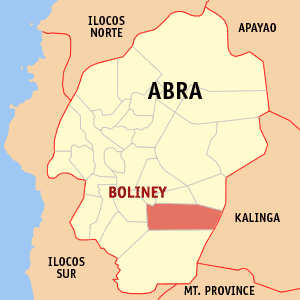
Boliney, officially the Municipality of Boliney, is a 5th class municipality in the province of Abra, Philippines. According to the 2015 census, it has a population of 3,573 people.

Malibcong, officially the Municipality of Malibcong, is a 5th class municipality in the province of Abra, Philippines. According to the 2015 census, it has a population of 3,428 people.
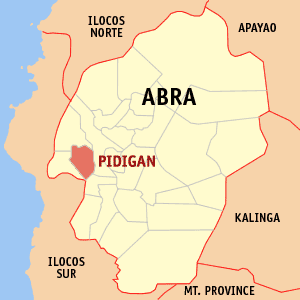
Pidigan, officially the Municipality of Pidigan,, is a 5th class municipality in the province of Abra, Philippines. According to the 2015 census, it has a population of 12,185 people.

San Quintin, officially the Municipality of San Quintin,, is a 5th class municipality in the province of Abra, Philippines. According to the 2015 census, it has a population of 5,438 people.

Tubo, officially the Municipality of Tubo,, is a 4th class municipality in the province of Abra, Philippines. According to the 2015 census, it has a population of 5,699 people.
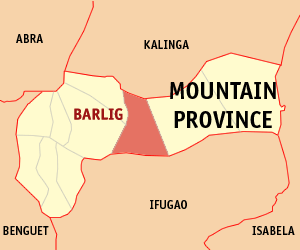
Barlig, officially the Municipality of Barlig is a 5th class municipality in the province of Mountain Province, Philippines. According to the 2015 census, it has a population of 4,819 people.
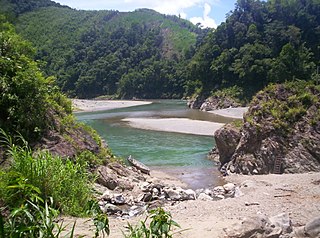
Kabugao, officially the Municipality of Kabugao,, is a 1st class municipality and capital of the province of Apayao, Philippines. According to the 2015 census, it has a population of 15,537 people.
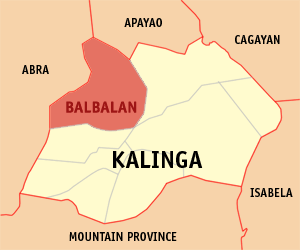
Balbalan, officially the Municipality of Balbalan is a 3rd class municipality in the province of Kalinga, Philippines. According to the 2015 census, it has a population of 12,195 people.
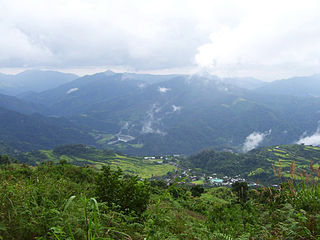
Lubuagan, officially the Municipality of Lubuagan is a 4th class municipality in the province of Kalinga, Philippines. According to the 2015 census, it has a population of 8,733 people.

Pasil, officially the Municipality of Pasil is a 5th class municipality in the province of Kalinga, Philippines. According to the 2015 census, it has a population of 9,644 people.

Rizal, officially the Municipality of Rizal is a 4th class municipality in the province of Kalinga, Philippines. According to the 2015 census, it has a population of 17,038 people.

Tabuk,, officially the City of Tabuk, or simply referred to as Tabuk City, is a 5th class city and capital of the province of Kalinga, Philippines. According to the 2015 census, it has a population of 110,642 people.

Tanudan, officially the Municipality of Tanudan is a 4th class municipality in the province of Kalinga, Philippines. According to the 2015 census, it has a population of 9,534 people.

Hungduan, officially the Municipality of Hungduan is a 4th class municipality in the province of Ifugao, Philippines. According to the 2015 census, it has a population of 9,400 people.
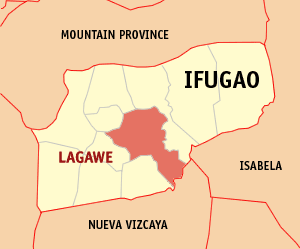
Lagawe, officially the Municipality of Lagawe is a 4th class municipality and capital of the province of Ifugao, Philippines. According to the 2015 census, it has a population of 19,333 people.
























